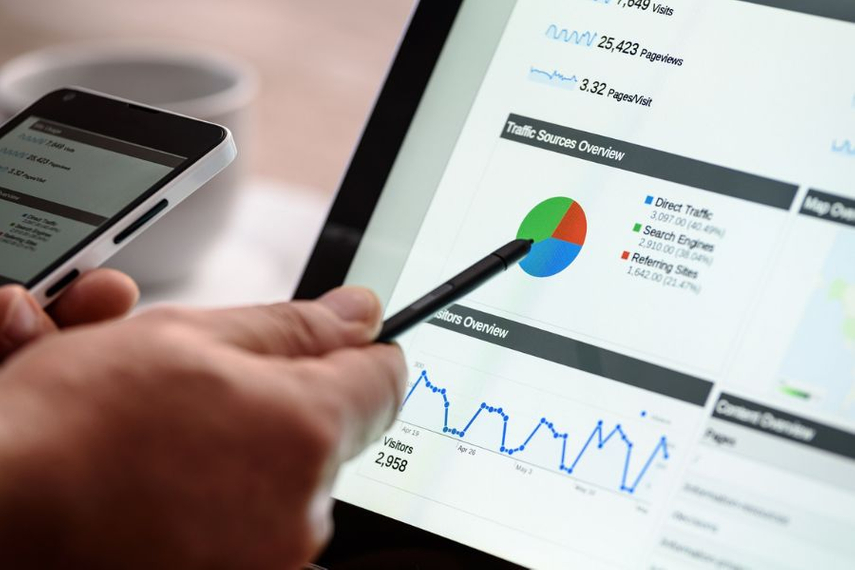
Are you wondering where to put your ad budgets to get the maximum results? Optimally balancing brand and performance ad budgets is essential to sustain long-term business growth, but the key question is what is the right portfolio mix between the two?
Before we dive deeper into this, let’s clarify what performance marketing (PM) and brand marketing (BM) mean. Conventionally defined, PM focuses on outcomes (app installs, site purchases, leads), while BM concentrates on building awareness and consideration.
These descriptions are somewhat limiting as both should lead to the same outcome—driving business growth. It is just that the timeframes of impact vary for either. PM helps generate short-term direct responses to your offering; BM short-circuits pathways in consumer’s minds to make your offering unforgettable.
Not all brand building involves BM, for example, product packaging. Also, not all BM is brand advertising, for instance, the red t-shirt associated with Zomato’s brand.
For this article, we limit the scope to the ‘advertising’ component of brand and performance marketing.

I like to think of a (simplified) warfare analogy while comparing the two: performance advertising is like a sniper aiming to hit a specific set of targets and brand advertising is like a bomb that covers a significantly wider field. To win a small battle, you may over-index on one or the other. But to win a war, you need a consistent and well-coordinated attack using both.
Early-stage businesses: Word of caution
Before discussing an optimal allocation, it is worth noting that an early-stage business might want to avoid ANY marketing till the business has clear proof points of product-market fit.
As an early-stage business, keep things simple:
- Work closely with product teams to iterate the right product that the market wants
- Create your brand identity, voice and messaging
- Use organic channels such as social media posts, SEO, testimonials, referrals
- Use PM as a testing channel using $100-$200/day
- Test product propositions to identify winning USP
- Test creative A/B tests
- Test targeting on a wide spectrum of audiences
- Derive these learnings one channel at a time (e.g. Facebook Ads first, Google Ads later)
Now on to post-PMF businesses. The car engine is built (core product), the interior is set up (website, distribution), the destination is known (customer persona), and fuel (advertising budgets) is needed to get the car to the desired destination(s).
Let us consider factors to keep in mind as you steer the dial from performance to brand ad budgets. A combination of eventually determines your portfolio mix and a cheat sheet at the end offers a quick guide to the right allocation for your business.
Customer Persona: Niche versus mass
Firstly, your business model can directly determine if you are targeting a narrow user base or a broad one. A B2B business by its very nature typically has a sharper customer base and therefore has overall ad budgets several orders of magnitude lower than a B2C business. Within B2B businesses, horizontal B2B products (e.g. payment gateway providers, UPI payment enablers) and services (e.g. marketing agencies) have a greater scope to run broad-based marketing campaigns, such as in newspapers, radio spots and billboards.
Vertical-focused B2B businesses (rule of thumb: less than 10000 prospective buyers) are better off finding user lists from B2B databases (such as ZoomInfo, Apollo.io) and working in close partnership with sales teams to target (and retarget) specific accounts on Google and Facebook. Here, the brand activity could include industry-focused events and PRs in relevant publishing platforms likely to be read by the prospective buyers within the target organisations.
Within B2C businesses, niche businesses are better off focusing on finding their audience via performance marketing because any broad-based targeting via brand campaigns will prove extremely cost inefficient. Within performance avenues, niche products that are high-intent purchases (e.g. contact lenses) are better served through investments on (Google) search, whereas low-intent discretionary purchases (e.g. kids’ premium apparel) are better served through discovery on social media.
Mass-market B2C businesses are the most relevant group for large-scale brand marketing. However, there are several more factors to consider before going down this route.
Sales Channel
If you’re an offline-first (or offline-only) business, is performance marketing even an option for you? Yes, your first set of ad dollars should still be invested via focused campaigns targeting in-market customers: ads on Google Search, or paid discovery via listing platforms (e.g. JustDial).
You may even consider setting up Store Visit campaigns on Google via Performance Max. Here you define a goal (such as collecting contact information, get direction clicks, or store footfall). While the targeting is still relatively broad, there is a feedback loop for the campaigns to improve over time.
This is a great option for franchise store owners (e.g. Lenskart franchises) or offline retail chains (e.g. Tanishq stores, restaurant chains). You can compare business outcomes through such performance campaigns with separate experiments on offline brand campaigns (e.g. promotion in a local newspaper) and thereby compare marketing efficiencies.
For online-first businesses, it is a good idea to continue all initial marketing investments on performance channels—you can take the full advantage of machine learning because the conversion events are tracked through the entire customer journey (full-funnel) and targeting should improve as the machine empowering the ad performance learns more about your business and its customers.
Stage of business
After PMF is evident, starting small with search ads and gradually expanding to other formats, such as display and video is common. At this stage, the incremental reach (new audiences targeted), conventionally a brand KPI, driven via performance marketing is also worth tracking. You want campaigns to get distributed to a wider audience first with gradual frequency buildup on a narrower set subsequently.

In the example above, we emphasise measuring relevant ad penetration within your TAM. This should grow quickly even via performance marketing campaigns (keep track of unique reach and frequency) as you scale campaigns. Consider supplementing with brand campaigns or exploring new performance channels when a given performance channel starts saturating with time (see graph below).

Generally, marketers underestimate the time taken to hit the ceiling. If you are a consumer brand, this ceiling will likely take years not months to hit.
As a CMO, if your team tells you, “X channel doesn’t work” it is likely to be too soon in the majority of cases. Instead ask them, “How do I make it work?”. It will often take several campaigns, creative and audience tweaks to hit scaleable success.
Purchase frequency
If your prospects participate in purchasing in the category your business is in several times a year (e.g apparel), the category is better suited for performance marketing (more purchases -> more customer signals -> better targeting via performance). If instead purchases are occasional, such as once or twice a year at most (e.g. term insurance), being the first brand of consideration becomes essential as most customers at any given point are out-market, not in-market.
Category lifecycle
Category-creating products that are often at the cutting edge of innovation often need more user education to drive trials and eventually purchases. It might be useful to integrate brand advertising from the very outset with performance marketing in such cases, and steer the budgets toward performance ads.
Industry margins
Thin-margin industries (absolute margin available per transaction) industries are poor fits for brand advertising—the thin margins are better utilised for sharper performance targeting or efforts led by sales teams. On the other hand, high-margin categories (e.g. perfume brands) have enough absolute contribution margin available to invest and reinvest in brand marketing.
Purchase and fulfilment cycle
The purchase cycle is a prospective customer takes to make a purchase decision. Fulfillment cycle is the time a business takes to complete a purchase request of a product/service. See the 2x2 below on where to place your bets. An interesting case is when purchase cycles are long (e.g. consider buying a high-end speaker system for your home), but fulfillment cycles are short (e.g. next-day delivery through Amazon). Retargeting performance campaigns (using custom audiences created via Pixel or SDK integrations) work well here - think of the catalogue ads you would start seeing immediately after you visited a site to research a product.

Conversion path:
If your product/service requires assistance (e.g. Edtech study abroad solutions) and therefore involves collecting leads, lead-farming through SEO or Social by building specific website properties that address prospect FAQs is likely more durable for business growth than lead-hunting via push-based performance ads (Search being an exception).
Geographic coverage:
A self-explanatory factor: brands (that offer their product/service in the widest geographic footprint) are better candidates for mass-scale brand marketing versus regional or local brands (although a national brand may still choose to avoid any brand marketing basis the other factors listed).
Organisational DNA
Lastly, there are a few company considerations that should influence your choice of performance vs brand ad budgets. All businesses face constraints in time, money, and personnel (probably all three). ‘Dhanda’ businesses (immediate cash-flow focus) are better off focusing only on performance ads.
BM needs greater resource commitment on each of time (more production time), money (content costs) and personnel (internal or external) and is better suited for businesses who are committed to a significantly longer-term payout of their marketing investments (businesses with strong balance sheets and/or investor-funded).
Cheat sheet
To make this guide more actionable, here’s a scorecard template to holistically evaluate the brand: performance portfolio allocation for your business.

Score your business on each of the above factors: 0 if the skew is towards performance and 1 if it is towards brand. A score of 6 or more makes your business a possible candidate for brand marketing.
For example, consider Boat (primarily audio products). A growth stage business, with low purchase frequency, in a mass category, in an innovative category (wireless headphones), typically with high margins, a lengthy purchase cycle (involves research), with a DIY purchase path, national geographic coverage, online-heavy sales channel, and a hyper scaling org DNA. It scores 7 on 10 in the scorecard above for BM and that explains the many celebrities you see endorsing Boat's brand.
While this scorecard (and the article) offers directional guidance and a framework to segment your marketing dollars, I will add that terms and conditions apply! Only you will understand the several nuances of your business the best.
Shalin Bhatt is a senior director at Moloco India.





.jpg&h=334&w=500&q=100&v=20250320&c=1)
.jpg&h=334&w=500&q=100&v=20250320&c=1)



.png&h=334&w=500&q=100&v=20250320&c=1)
.png&h=334&w=500&q=100&v=20250320&c=1)



.jpg&h=268&w=401&q=100&v=20250320&c=1)




.png&h=268&w=401&q=100&v=20250320&c=1)